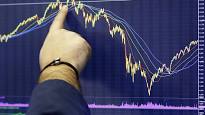
The mortgage market is an interesting animal. Long term mortgage rates traditionally track the 10 year treasury and historically trade in a very narrow band, approximately one percent higher than the 10 year treasuries. This would put mortgages today in the low 2% range. Why are mortgage rates not following historical patterns?
What is in the data.
The mortgage market focuses on what is known as the primary/secondary spread, which measures the difference from where the lender can sell a home loan into the market and where they will offer one to you.
That spread has been trending far above its historic average, and has kept mortgage lending rates higher than they otherwise would be. As of Tuesday’s close, that spread was 1.72%, compared to the 1% average seen over the last half decade. This means mortgage rates are about .75 higher than they should be.
Although .75% is not a big number, assume a loan of 400k, currently with a 3.25% rate, the payment is 1741. Assuming the spread were closer to historical levels, the rate would be 2.5% leading to a payment of 1580 a month a $2,000 annual decrease based on current rates. Assuming a 30 year mortgage over the life of the loan this is almost 60k in increased costs.
Why did the mortgage market “break”?
The primary/secondary spread is in part a measure of how much risk lenders believe there is within mortgages. With the economic damage from the coronavirus, forbearances, and future economic uncertainty, it is certainly elevated at almost double the historical amount.
Unfortunately, there is not much the federal reserve can do to control the spread. They have already purchased an astounding $765 billion of mortgage bonds since March 16 to try to stabilize the secondary markets yet there has been little movement on the spread keeping interest rates elevated.
Will the spread return to historical levels?
As of June 14, 8.45% of mortgage loans are in forbearance, according to the Mortgage Bankers Association, while the Federal Reserve Bank of Atlanta’s GDPNow index points to a 45.5% collapse in GDP for the second quarter.
Neither of these metrics are giving hope that the spread will decrease, if anything it could increase. Until the market gets a clearer picture on the economic fallout from the pandemic and what the future holds, I doubt there will be much change in the spread.
Summary
Fortunately, mortgage rates are at historic lows, but still substantially higher than they should be. The coronavirus has exposed weaknesses in the mortgage market. Buyers of mortgages are requiring a “risk premium” with all the economic uncertainty created by the virus. This risk premium will likely stick around for a while longer until the virus and the economic fall out are better understood.
We are still Lending as we fund in Cash!
I need your help!
Don’t worry, I’m not asking you to wire money to your long-lost cousin that is going to give you a million dollars if you just send them your bank account! I do need your help though, please like and share our articles on linkedin, twitter, facebook, and other social media. I would greatly appreciate it.
Written by Glen Weinberg, COO/ VP Fairview Commercial Lending. Glen has been published as an expert in hard money lending, real estate valuation, financing, and various other real estate topics in Bloomberg, Businessweek ,the Colorado Real Estate Journal, National Association of Realtors Magazine, The Real Deal real estate news, the CO Biz Magazine, The Denver Post, The Scotsman mortgage broker guide, Mortgage Professional America and various other national publications.
